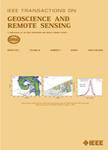版权所有:内蒙古大学图书馆 技术提供:维普资讯• 智图
内蒙古自治区呼和浩特市赛罕区大学西街235号 邮编: 010021

作者机构:Global Sci & Technol Inc Greenbelt MD 20770 USA Natl Ocean & Atmospher Adm NOAA Ctr Satellite Applicat & Res STAR College Pk MD 20740 USA
出 版 物:《IEEE TRANSACTIONS ON GEOSCIENCE AND REMOTE SENSING》 (IEEE Trans Geosci Remote Sens)
年 卷 期:2022年第60卷
核心收录:
学科分类:0808[工学-电气工程] 1002[医学-临床医学] 08[工学] 0708[理学-地球物理学] 0816[工学-测绘科学与技术]
基 金:PROTECH contract awarded to Global Science & Technology (GST) by the NOAA/National Environmental Satellite Data and Information Service (NESDIS)
主 题:Band-to-band registration (BBR) modula-tion transfer function (MTF) moon National Oceanic and Atmospheric Administration 20 (NOAA-20) spatial character-ization Visible Infrared Imaging Radiometer Suite (VIIRS)
摘 要:The second Visible Infrared Imaging Radiometer Suite (VIIRS) instrument aboard the National Oceanic and Atmospheric Administration (NOAA) 20 satellite has been successfully operating since its launch on November 18, 2017. Since VIIRS does not include onboard calibrators to perform the on-orbit geometric data quality characterization for parameters such as the modulation transfer function (MTF) and band-to-band registration (BBR), the monthly scheduled lunar observations are used in this study. The radiometric property of the moon surface has demonstrated its long-term stability and it is also a suitable spatial target for the on-orbit calibration of remote sensing instruments. Using the commonly practiced methodologies, the VIIRS BBR results are derived in the scan and track directions. The initial trends show that the VIIRS BBR is very stable on-orbit within & PLUSMN;0.1 pixels in both scan and track directions meeting the highest requirements of within 0.2 pixels. Using the sharp edge of the moon, the scan-direction MTF at the Nyquist frequency was approximately 0.23. The MTF values are well above the specification of 0.3 in imaging (I)-bands and they are very stable over the study period, whereas the moderate-resolution (M)-bands results were slightly below the specification line as suggested by prelaunch test results. The scan-direction MTF estimations were consistently near 0.2 over four years of operations. Track-direction MTF values showed oscillations because of the annual cycle of lunar shadow angle and spatial features in the moon side. However, the track-direction MTF values met the specification with large margin.